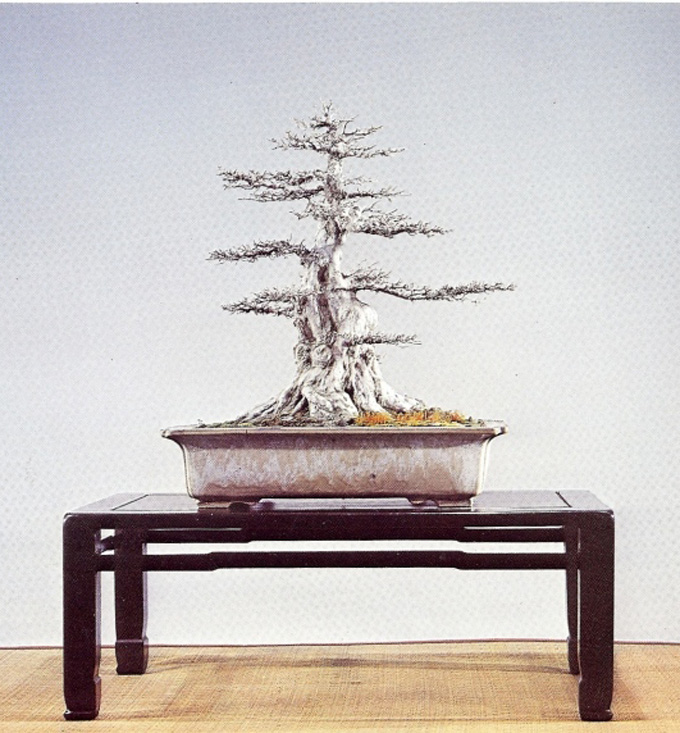 Trident Maple (Kaede) at the Kokufu-ten in 1972. It now lives in Washington D.C. at the National Bonsai and Penjing Museum. The photo is from Capital Bonsai.
Trident Maple (Kaede) at the Kokufu-ten in 1972. It now lives in Washington D.C. at the National Bonsai and Penjing Museum. The photo is from Capital Bonsai.
Back to square one
I’m still trying to get back to square one after the 3rd U.S. National Bonsai Exhibition, so I won’t say too much except that I’ve recently come across two excellent posts about Trident maples. The first is at Capital Bonsai and shows the repotting of a famous old Trident that now resides at the U.S. National Bonsai and Penjing Museum, and the second, which is about defoliation (and more), is at Peter Tea Bonsai. Peter is in Japan.
Not to confuse you (maybe to keep you on your toes?), the sequence of the photos below from the two blogs are mixed up just a bit.
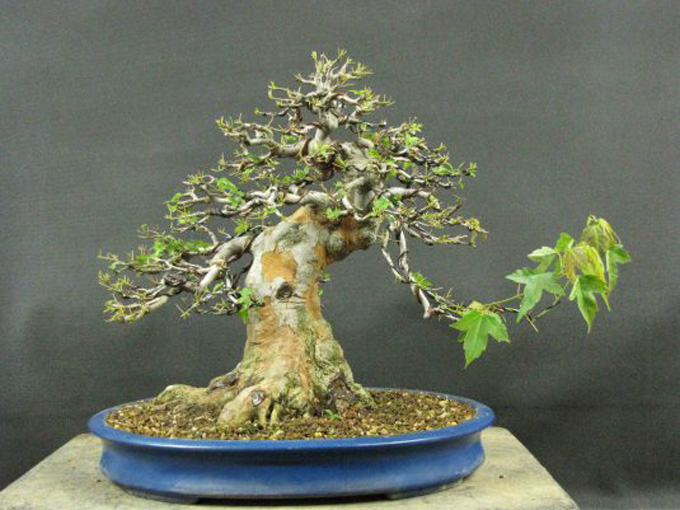 Here’s one of the Tridents (we’ve seen this one before) that is featured on Peter Tea’s blog. It has just been trimmed, defoliated and wired.
Here’s one of the Tridents (we’ve seen this one before) that is featured on Peter Tea’s blog. It has just been trimmed, defoliated and wired.
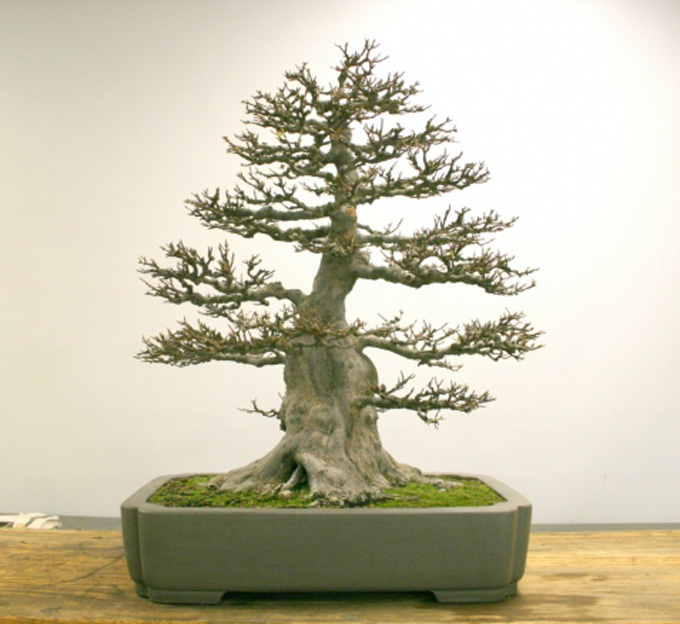 The tree at the top of the page, forty years later.
The tree at the top of the page, forty years later.
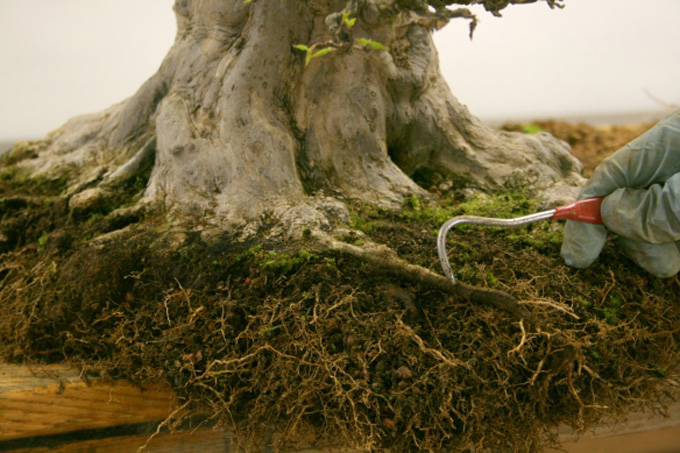 Carefully combing out the surface roots on the famous old Trident at the National Museum. From Capital Bonsai.
Carefully combing out the surface roots on the famous old Trident at the National Museum. From Capital Bonsai.
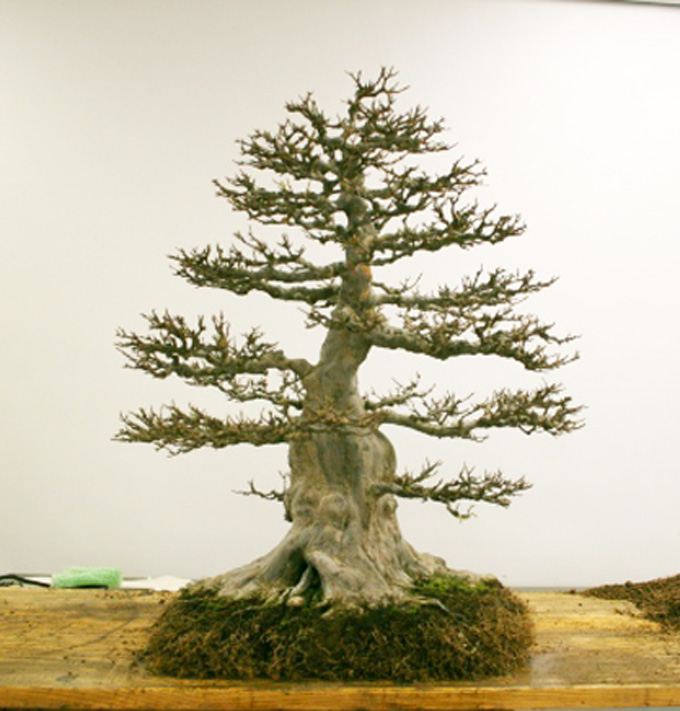 Ready to pot. I like the way the pot-less and almost soil-less condition in this shot, highlights the nebari and lower trunk.
Ready to pot. I like the way the pot-less and almost soil-less condition in this shot, highlights the nebari and lower trunk.
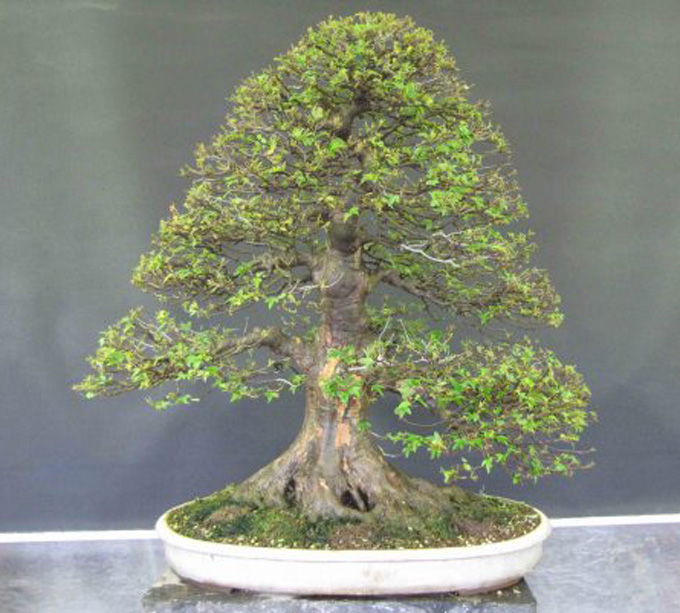 Another Trident from Peter Tea’s blog, in June, after its second defoliation of the season.
Another Trident from Peter Tea’s blog, in June, after its second defoliation of the season.
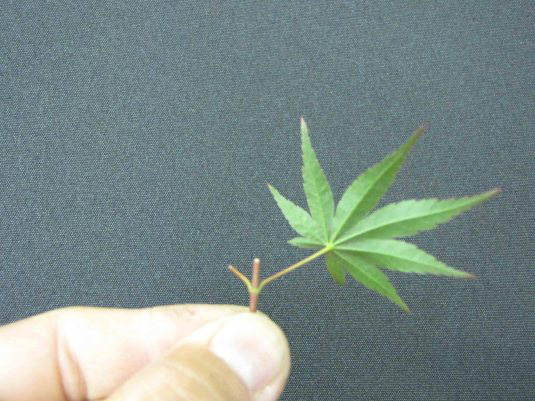 That’s not a Trident leaf! It’s from Peter’s post; the full of which is: The Trident Maple Project and Summer Maple Work.
That’s not a Trident leaf! It’s from Peter’s post; the full of which is: The Trident Maple Project and Summer Maple Work.
interesting – over 40 years the trunk has softened and lost some of the definition of ’72’ and the ramification looks a little more relaxed than it did then – but it is great to see trees as they get a history. the level of detail in peters blog post on tridents is excelent – i think every trident we own will improve because of it.
Thanks Marcus,
Agreed. If the photos are fairly accurate, then some definition and ramification has been lost. This may be expected when a tree goes from a master’s collection to a situation with a series of curators. I suspect that over the years in the West the curator situation has been somewhat spotty, though I believe that now most curators in charge of major collections have a attained a fairly high level of competence, but not at the level of a master.
Agreed also about Peter’s blog. It is typical of the high level information that he has been posting.